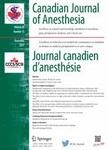版权所有:内蒙古大学图书馆 技术提供:维普资讯• 智图
内蒙古自治区呼和浩特市赛罕区大学西街235号 邮编: 010021

作者机构:Heidelberg Univ Dept Anesthesiol D-69120 Heidelberg Germany Heidelberg Univ Dept Expt Surg D-69120 Heidelberg Germany
出 版 物:《CANADIAN JOURNAL OF ANAESTHESIA-JOURNAL CANADIEN D ANESTHESIE》 (加拿大麻醉杂志)
年 卷 期:2000年第47卷第7期
页 面:673-679页
核心收录:
学科分类:1002[医学-临床医学] 100210[医学-外科学(含:普外、骨外、泌尿外、胸心外、神外、整形、烧伤、野战外)] 10[医学]
基 金:Cooperative Research Committee of the Faculty of Medicine University of Heidelberg
主 题:小动脉/药物作用 小动脉/病理生理学 血压/药物作用 强心药/药理学 内毒素血症/病理生理学 红细胞/药物作用 红细胞/生理学 心率/药物作用 回肠/血液供给 回肠/药物作用 肠黏膜/血液供给 肠黏膜/药物作用 脂多糖类 米力农/药理学 磷酸二酯酶抑制剂/药理学 大鼠 Wistar 局部血流/药物作用 血管舒张药/药理学 动物 男(雄)性 大鼠
摘 要:Purpose: To determine whether the compromised intestinal villus blood flow in a rat model of endotoxemia could be improved by continuous infusion of the phosphodiesterase (PDE) inhibitor milrinone. Methods: Twenty-four anesthetized and ventilated rats were laparotomized and an ileal portion was exteriorized and opened by an antimesenteric incision. The ileal segment was fixed with the mucosal surface upward. Microcirculatory parameters were assessed by intravital videomicroscopy. The animals were randomly assigned to receive one of three treatments: infusion of Escherichia coli lipopolysaccharides without phosphodiesterase inhibitor pretreatment (= LPS group);or infusion of LPS with milrinone pretreatment (= milrinone group), or without infusion of LPS or milrinone (= control group). Macrohemodynamic parameters (MAP, HR) and microhemodynamic parameters of ileal mucosa (mean diameter of central arterioles = D-A and mean erythrocyte velocity within the arterioles = V-E) were measured 30 min before and at 0, 60, and 120 min after induction of endotoxemia. Mucosal villus blood flow was calculated from D-A and V-E. Results: In the milrinone group MAP decreased 60 min after induction of endotoxemia whereas it remained table in the control and the LPS group. In both groups given endotoxin V-E decreased after start of LPS infusion, in contrast, D-A decreased in the LPS group, but increased in the milrinone group after 120 min of endotoxemia. Thus, the endotoxin-induced decrease of intestinal villus blood flow was diminished but not fully restored by milrinone infusion. Conclusion: Our results indicate that milrinone has some beneficial microcirculatory effects during endotoxemia. Although it contributed to systemic hypotension, it attenuated intestinal mucosal hypoperfusion.